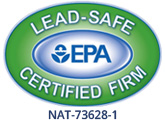Why Carbon Monoxide Leaks Increase in Winter
 According to the Centers for Disease Control and Prevention, roughly 50,000 emergency visits are due to carbon monoxide poisoning each year, along with 400 fatalities. Certain individuals are more vulnerable than others, including the elderly and those living with respiratory issues.
According to the Centers for Disease Control and Prevention, roughly 50,000 emergency visits are due to carbon monoxide poisoning each year, along with 400 fatalities. Certain individuals are more vulnerable than others, including the elderly and those living with respiratory issues.
While many of us associate carbon monoxide poisoning with a running vehicle, it’s also a byproduct of operating your furnace and any appliances or tools that run on fuel.
When these devices operate in an area with poor ventilation, such as a garage, or are not properly ventilating themselves, carbon monoxide can accumulate in your home.
Through a high level of exposure, carbon monoxide can build up in your blood, where it replaces oxygen and potentially result in asphyxiation if unnoticed.
With many people turning on their furnaces for heat, in addition to using gas stoves and gas-based snow blowers this season, incidents of carbon monoxide poisoning tend to increase during winter.
Identifying Carbon Monoxide Poisoning
Carbon monoxide is odorless, tasteless and invisible. Unless your home is equipped with a specific carbon monoxide detector, you likely won’t notice its presence. Yet, certain symptoms indicate you’re being exposed to carbon monoxide, including:
- Dizziness
- Severe headache
- Nausea
- Vomiting
- Fatigue
If carbon monoxide leaks inside your home, you’ll often experience immediate relief from going outside.
Carbon Monoxide Exposure In Your Home
Inside your house, issues with the heating system, hot water heater and appliances requiring gas, oil or wood to operate can all cause carbon monoxide to build up. Particularly, many homes feature a gas or oil-burning furnace that vents to the outside through a pipe you can see on the exterior.
Carbon monoxide is a natural result of the combustion process. When everything is running correctly, the furnace’s burner generates carbon monoxide gas, which is then stored in the heat exchanger, a metal container or tubing that heats up once the combustion process begins. From the heat exchanger, it passes through the flue vent and exits your home.
Due to modern emphasis on reduced emissions, a lower carbon footprint and improved efficiency, gas and oil-burning furnaces naturally create a small amount of carbon dioxide. However, multiple factors can increase the device’s output:
- Debris accumulating in the furnace is not cleaned out, resulting in a dirtier combustion process that generates more carbon monoxide.
- Your home has an older, less-efficient unit that’s on its last legs.
- The furnace has developed a crack in the heat exchanger or flue vent, causing carbon monoxide gas to leak out and into your home.
- The venting system is blocked, due to leaves or debris gathering in the flue vent, or it was installed incorrectly, which can prevent carbon monoxide gas from being fully ejected outdoors.
Especially in these last two scenarios, carbon monoxide can quickly build up inside your home and put lives in danger.
How to Prevent Carbon Monoxide Buildup This Winter
To reduce your risks of carbon monoxide poisoning during the colder months of the year:
- Get your furnace inspected to clean out any debris, replace damaged parts and ensure it is venting correctly.
- Periodically check around vents and air intakes to make sure leaves, debris and animals aren’t blocking the opening. Later, make sure snow isn’t obstructing the flow from these points.
- Check your furnace’s air filter throughout winter to prevent debris accumulation.
- Never use a camp stove or charcoal-burning stove inside your home and if you have a generator, keep it outside at least 20 feet from your property whenever you turn it on.
- Avoid using a gas oven to heat your home.
- Check the fireplace to make sure it’s vented properly before starting a fire.
- Never leave a snow blower running inside of an enclosed garage.
- Don’t heat up your car inside of an enclosed garage.
- Add a battery-powered carbon monoxide detector to your home and change the batteries every six months.
- If you start displaying symptoms of carbon monoxide poisoning, leave your home right away and call 911.
If your home has an older furnace and you need to schedule service, make an appointment with our HVAC technicians today.




